Our new Ultimate Road Warrior RV Internet System
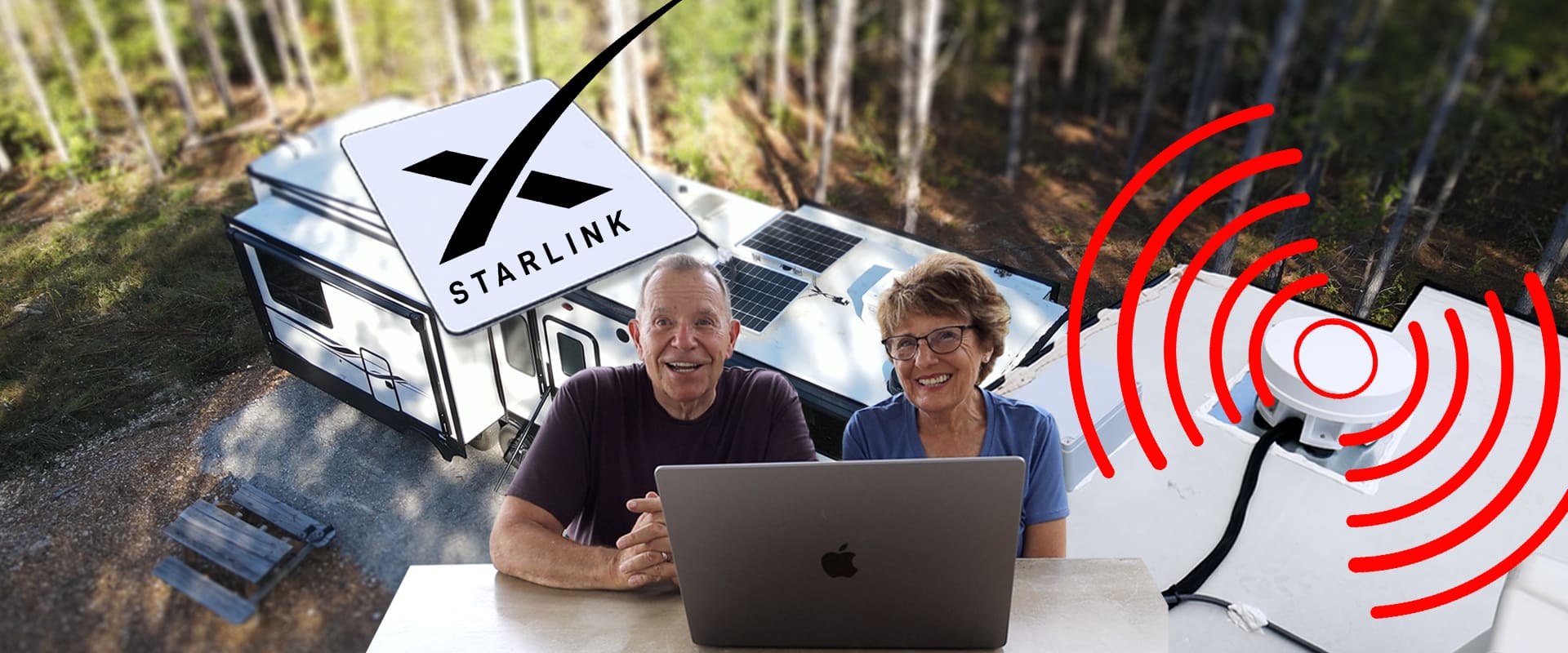
We have a new RV Internet System. While it is super expensive, it has been performing so well for us that for the first time in 12 years of living the RV Lifestyle, we now have complete confidence that I can do my work and reliably get online from pretty much any place.
We got it from a company called Mobile Must Have and right at the start, let me say that they are not a sponsor, nor are they paying for this blog post or the accompanying installation video. Nor do I get a commission if you buy from them.
I am a paying customer. A paying and satisfied customer.
And let me also be very clear about this: The system I have is NOT for everyone. Very few RVers have the needs Jen and I have as we travel and send huge 6-10 GB video files through the Internet for our videos and podcasts.
The biggest perk I received for this was the CEO and the Marketing Director both came to me and installed the system. They don’t normally do that.
But they made a video on the install for their channel, just as I did for my RV Lifestyle YouTube channel.
You can see my video below. Then keep reading for the details
Why we needed this ultimate RV Internet system
Over the years we have tried all sorts of Internet systems for our RV. Mobile phone hotspots, iPad hotspots, Mi-Fi cards, Jetpacks, Cellular Boosters, Wi-Fi Boosters, dedicated routers, satellite systems and Starlink. We’ve subscribed to Winegard, AT&T, T-Mobile, Verizon and Internet resellers.
All worked to various degrees. Some better than others. But none were reliable 100% of the time.
I came to dread sending my Saturday videos. It would take hours and hours to upload a file. Sometimes, I’d have to start at 7 p.m. and let it go all night long. Sometimes I’d awake in the morning to see the file upload crashed, that the Internet connection had inexplicitly dropped overnight.
Many times, we’d have to break camp and make our way to a nearby town and look for a faster Wi-Fi connection at Starbucks or a fast food place that we could access. Even then, it would often take a long time.
Then there were Sunday nights and our weekly live program “Ask Us Anything” that we simulcast to YouTube, Facebook, X (Twitter) and LinkedIn. Livestreams must have a solid upload connection. When the connection deteriorates, the video breaks up and the stream collapses.
We always had to find a place with a good Internet connection and even then, what started out as a good Internet connection would often die mid-show as cell towers got busy..
As our RV Lifestyle business has grown, our Internet needs have, too. We found ourselves frustrated by poor Zoom connectivity for important meetings and challenged in meeting file deadlines for our travel book production.
We needed help.
How we ended up with this RV Internet system
A couple of months ago, I reached out to Chris and Cherie of the Mobile Internet Resource Center.
I have known them for several years and have had them on our RV Podcast as guests many times. In my experience, no one knows more about RV Internet than this couple, whose fulltime jobs are testing, reviewing, and sharing the latest in RV Internet connectivity with their members and followers.
I asked them what they used and when they told me they partnered with Mobile Must Have, I asked for an introduction.
That’s how I met Erik McCauley, the CEO, and Andy Murphy, the marketing director. Both are fulltime RVers. Over several conversations, as I explained our expectations and needs, they made some recommendations. I told them I wanted the most reliable system currently possible.
They made it clear that it wouldn't be cheap.
When all totaled, the equipment cost would be just shy of $6,000. It’s a package they put together offer called the Ultimate Road Warrior 5G Bundle.
I agreed.
Both met me last month at the Elkhart, Indiana 4-H Fairgrounds, where Jen and I were attending a rally for Keystone Montana RV owners. Erik and Andy were headed to the big Hershey RV show and detoured to spend a Saturday afternoon installing my system.
What is our RV Internet System?
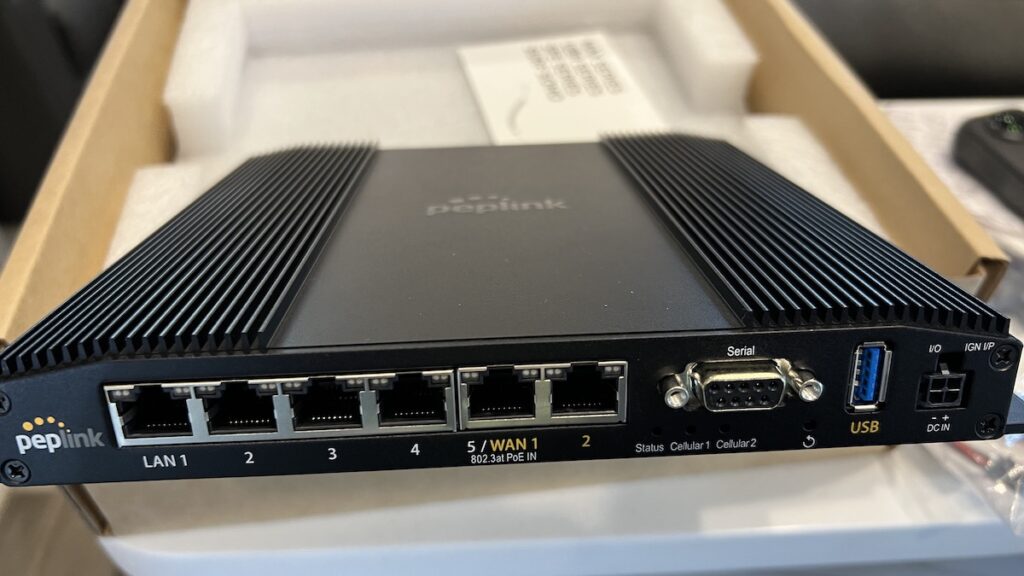
Here are all three main parts of my RV Internet system:
- A $2,500 high-performance Starlink flat-mount antenna and wedge mount for a permanent installation on the roof of our fifth wheel. This is considerably bigger than the regular Starlik dishy I had been using, with a much wider field of view that connects to more satellites. Starlink performance with this larger antenna mounted on the roof of our RV increased dramatically over my old dishy system.
- The Peplink MAX BR2 Pro Dual 5G Mobile Router. Peplink is truly the gold standard in mobile Internet routers. I had a good experience with a previous model I bought three or four years ago that had fewer features. The top of the line MAX BR2 allows for more connections, more Internet sources, and higher speeds. It can connect to two cellular providers at the same time with fast 5G and has a USB port to upgrade to a third 5G modem if needed.
- The Parsec Great Pyrenees 11-in-1 Antenna. This has 8 omni-directional LTE and 5G cellular antennas, two Wi-Fi antennas, and a GPS antenna. This is the cellular antenna of choice for police, EMS, and first responders nationwide. It roof mounts.
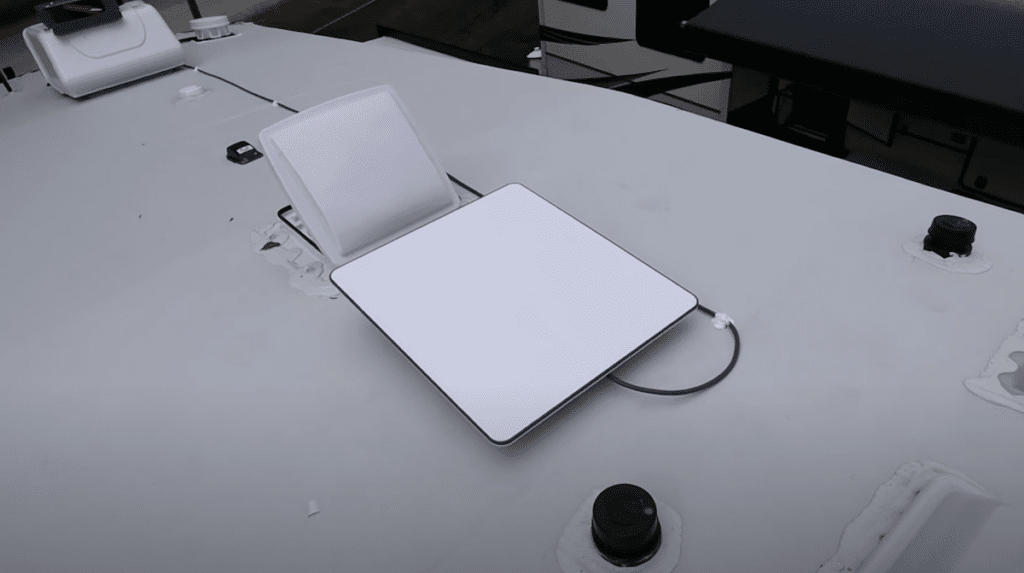
Again, this is the ultimate system. They have several other bundles and packages, with and without Starlink as an option, starting at less than $700. You can find them at Mobile Must Have and be put in contact with a consultant to discuss your specific needs. They are offering 10% off to our followers who reach them through that link.
Installing our new RV Internet System
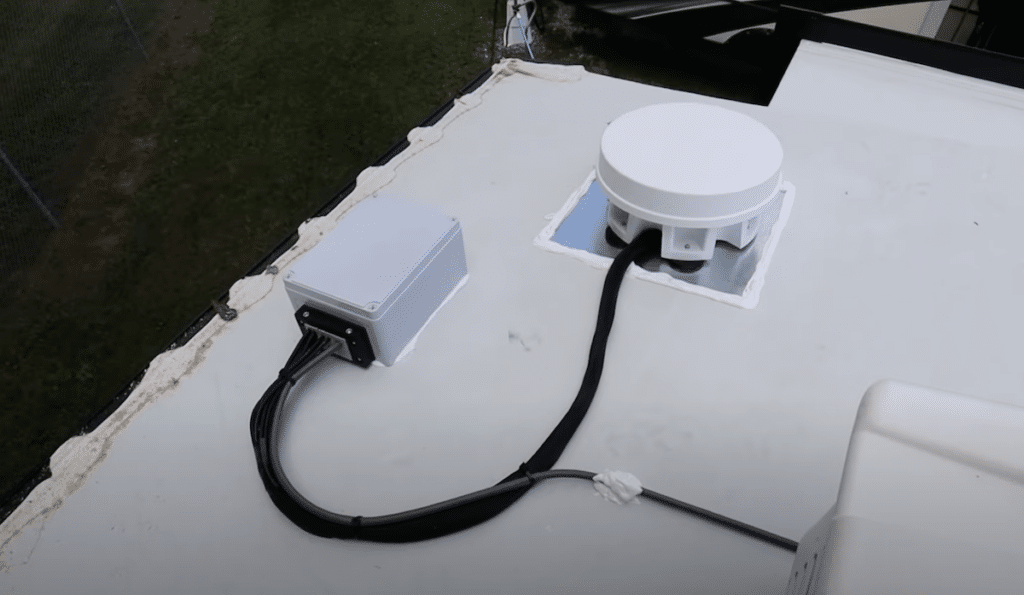
The video above details the installation process.
It went surprisingly well. Erik and Andy installed the high-performance flat-mount Starlink antenna first, then assembled the waterproof housing for the Starlink cable and the leads from the cellular and Wi-Fi antennas that would feed into the RV.
After careful measuring, they drilled a one-and-a-half-inch hole for a short length of PVC pipe that came through above one of the storage shelves for our entertainment console at the back of the RV.
There, we mounted the Starlink power supply and the Peplink BR2 router.
We powered the Starlink supply with an inverted AC plug under the entertainment console and tapped into a 12-volt supply used for radio to power the router.
Everything was neat and clean and securely mounted.
The accompanying video documents the whole process.
How our RV Internet System performs
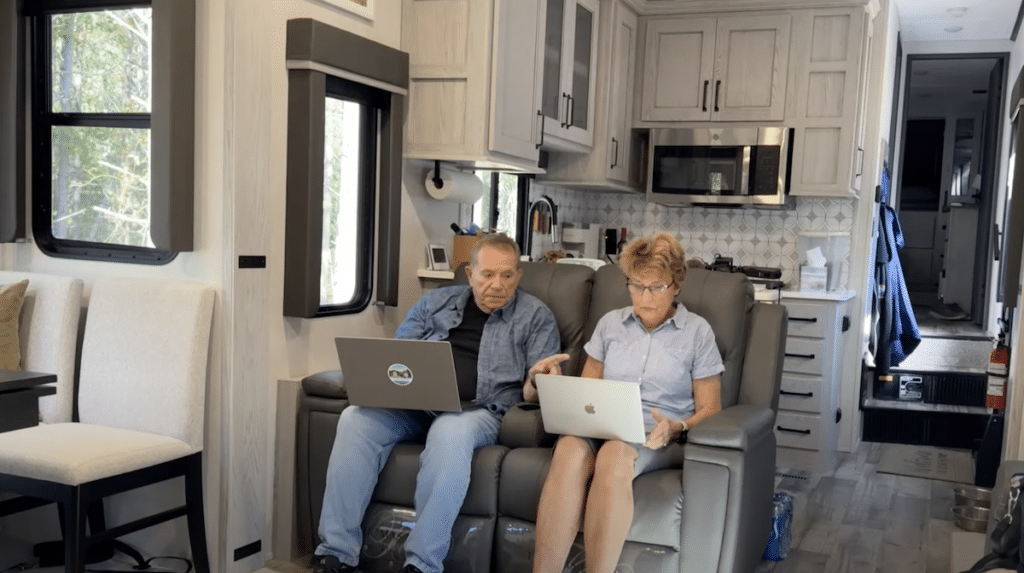
Once installed, the Mobile Must Have team configured my system to give me two wireless networks. One is for regular everyday use like web browsing, answering emails, and streaming video.
The other uses a proprietary Peplink feature called Speed Fusion that provides consistent connectivity. It essentially takes Starlink and my two cellular connections (Verizon and T-Mobile) and fuses all three together, constantly prioritizing the fastest most stable connection. It’s all done seamlessly. I use this for my most important connections, livestreams, and uploads.
I have had this system for about a month and have tried it out in five states, in crowded campgrounds, and in remote wilderness areas. Some places had clear skies above the RV, and some were partially obstructed by trees.
In all cases, I had very solid upload and download speeds, with Starlink being the primary source.
My speedchecks showed download speeds as high as 516 Mbps, and upload speeds of 119 Mbps. Those were in areas with no overhead tree cover.
Where the Starlink antenna was partially obstructed and some of the connectivity was fused with T-Mobile or Verizon, the lowest speeds were 84 Mbps down and 7 Mbps up. That was in a remote area of Middle Tennessee with limited cell service and considerable tree obstruction over the Starlink antenna.
Most times, I have consistently had download speeds over 100 Mbps and uploads ranging from 12 to 60 Mbps.
It is the upload speeds that matter the most to me. For high-quality live video, I need at least 5 Mbps.
Since we installed the new RV Internet system, we have been able to do our livestreams every Sunday night with no issues. Same with sending large files.
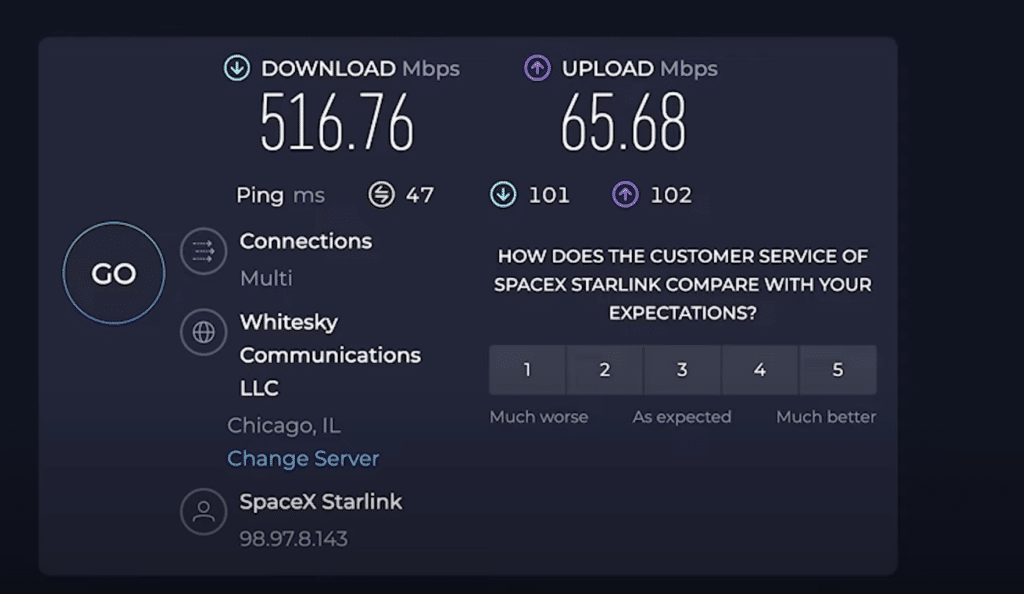
Bottom line: Pros and Cons of our Ultimate Road Warrior RV Internet System
Pros of our RV Internet System
- Redunant options to stay connected via Starink, T-Mobile and Verizon and all with ultra-fast modems.
- Totally customized and expandable if I want to add AT&T as a third cellular provider
- SpeedFusion, that proprietary Peplink router feature, delivers consistent, smooth and stable connectivity using the best of all my connections at the same time
Cons of our RV Internet System
- The expense. The upfront equipment costs are around $6,000. I also have monthly access fees from Starlink ($150), Verizon ($100) and T-Mobile ($50).
- Installation. It’s obviously more involved. Holes have to be drilled into the roof. Wiring needs to be done. None of this is particularly difficult. Most experienced DIY people can do this, as can a mobile RV tech. Me? I’m not handy enough. Jennifer said no way. I was lucky to get Erik and Andy to do this for me. But that’s not what they normally do. For us, they made an exception as they made their own installation video and used my system as the model.
Less Expensive RV Internet Systems
Our system is the top of the line. Other solutions are available at considerably less cost, tailored to your specific needs. The best thing to do is to contact Mobile Must Have yourself for a free consultation. You can reach them at http://mobilemusthave.com/pages/rvlifestyle. They are offering 10% off to those who contact them through that link.
More RV Internet Resources
My worry in this post is that some people will see the cost of our system and start blasting us because of the cost. I've tried to make it very clear that our system is unique to us and those who may share our special challenges and video upload needs.
I also hope I have made it clear that we are customers of Mobile Must Have and they are not sponsoring this, nor do we get a commission or have any financial reason for telling you about them.
There are many, many other solutions that are much less expensive than the RV Internet system we now have.
Here are three other resources that we think will be very helpful to you.
- Choosing the Best RV Internet for You – For RVers, there is no one solution for everyone. In this Podcast episode, we detail all the options available.
- The Pros and Cons of Starlink for RVers – But as good as the system is, there are pros and cons to consider before RVers should totally rely on it.
- Mobile Internet Resource Center – If you click where else, click here. Chris and Cerie, who run this website, know more about RV Internet systems than anyone else.
Where will you be RVing Next?
Plan Your Next Adventure to Coastal Maine
By popular demand, we announce the publication of the latest in our library of RV travel guides – a 7-Day Adventure Guide to Coastal Maine.
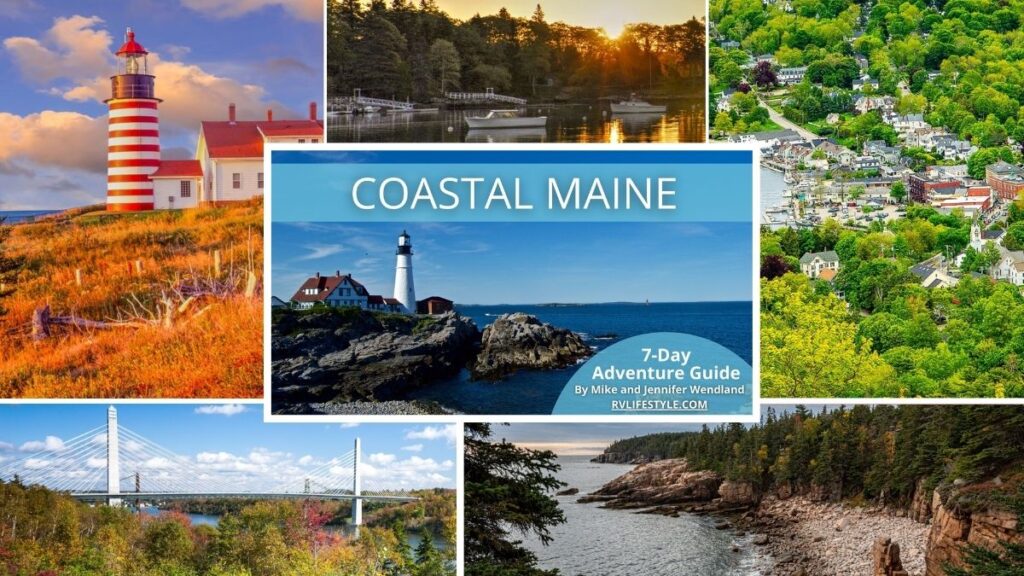
With its dramatic rocky coastline, enchanting fishing towns, and windswept sandy beaches, Coastal Maine is a destination that should be on every RVers’ bucket list.
We call these guides “7 days,” but they really are seven stops. They’re meant to be experienced at your own pace, a couple of days at one stop, a week at another, however long you want.
We have carefully curated this 66-page digital guide (not a printed book) so you can take in all Coastal Maine has to offer. We give you the routes to drive, the spot to stop, the places to eat, and the museums, excursions, hikes and adventures we think you will enjoy the most.
For an RVer, Coastal Maine has it all: stunning landscapes, short drives between stops, spacious campsites, that perfect small city and nature mixed with a seemingly endless variety of things to see and explore.
Explore Arizona with our RV Adventure Guide

We start our Arizona adventure guide at the South Rim of the Grand Canyon, then move west in a slow semi-circle to hit all of the highlights, including Sedona, Lake Havasu, Quartzsite, Kofa National Wildlife Refuge, Apache Junction, and Saguaro National Forest.
Throughout this guide, we explore incredible rocky vistas, historical and mystical sites, inspiring scenic byways, charming Southwest towns, national and state parks galore with wonderful wildlife. No matter what your interests are, you are sure to find something to awe and inspire you in Arizona.
We recommend Hollywood Racks for your RV Lifestyle…
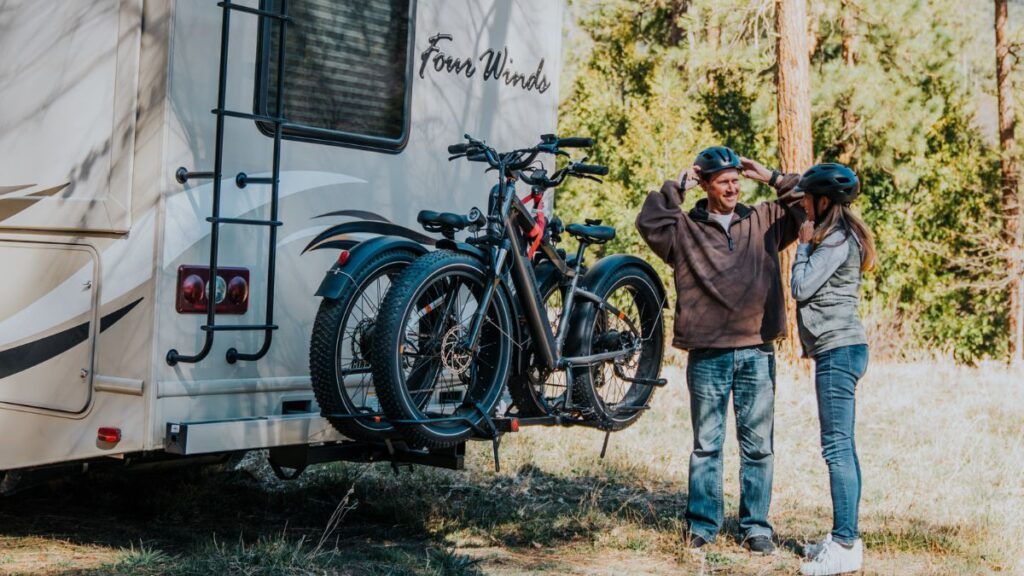
The RV Rider bike rack for RV's, motorhomes, and fifth wheels carries 2 E-Bikes (up to 80 lbs. each) on the back of an RV Motorhome, a 5th wheel, or a flat towed vehicle. A 2″ hitch is required for this rack. Special features include universal heavy-duty wheel holders for heavy load carrying capacity. These wheel holders can fit any tire up to 5″ wide and include a ratchet wheel strap. Locking frame grabbers secure the bikes in place. This bike rack is not compatible with bumper pull, travel trailers or bumper mounted hitch receivers. Enter the promo code RVLIFESTYLE to save 10%
If you want to look at everything they offer, not just the RV Rider rack — go here and explore all the options!
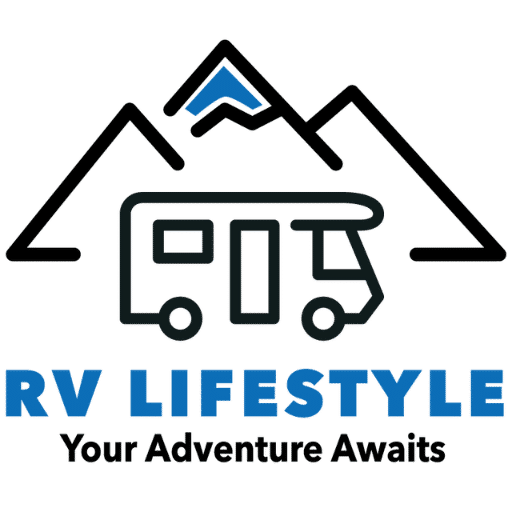
This seems like overkill for most people unless you need to use it while moving/driving. I own a real estate company and boondock at 9000 feet in the Colorado mountains for over 30 nights a summer. I need good Internet and often download large photo and video files. I have used the portable version of Starlink since it came out over 2 years ago. It cost $500 when I bought it. I pay $150 a month for the service that I shut down in November for the winter. The Starlink system I have is incredible. It works great with my batteries and a solar panel. No generator necessary. Great wifi calling capability. Never drops service. It’s not permanently mounted on my camper so I need to set it up at my camp but it’s quick and easy to do. If you need service while actually driving through dead zones then the system I use won’t work for you. If you just need service at your camp site then save some money and get the portable Starlink.
Thanks for sharing, Jay. Starlink is definitely a great option if you are in the right location in the country to be able to count on service. And as Mike said, for most people, they wouldn’t need all that he has. But for the places he goes and his circumstances with videos and such, it is what he had to do. Happy Trails! Team RV Lifestyle